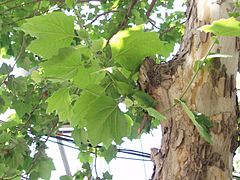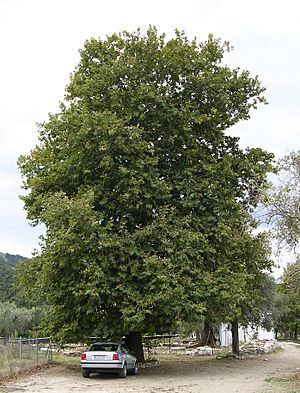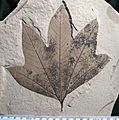Platanaceae facts for kids
Quick facts for kids Platanaceae |
|
|---|---|
 |
|
| Plantanus × hispanica | |
| Scientific classification | |
| Kingdom: | |
| Division: | |
| Class: | |
| Order: | |
| Family: |
Platanaceae
T.Lestib.
|
The Platanaceae family is a group of flowering plants. It has only one main type, called the Platanus genus. This genus includes about six to ten kinds of tall trees. These trees naturally grow in cooler, temperate and warmer, subtropical parts of the Northern Hemisphere. All trees in this family have small flowers that grow in tight clusters. Their fruits are tiny, dry seeds called achenes, which have hairs at their base.
What Platanaceae Trees Look Like
Platanaceae trees are large and lose their leaves every year (deciduous). They have unique bark that peels off in big, uneven pieces. This reveals a smooth, pale, and patchy surface underneath.
- Leaves: The leaves are usually large and have different shapes. Most have three to seven main points or lobes, like a hand. The leaf stems (called petioles) often cover the new buds.
- Stems: The stems have special structures inside them. New buds are covered by a single scale.
- Flowers: These trees have both male and female flowers on the same plant (monoecious). The flowers are small and not very noticeable. They grow in round, hanging clusters.
- Fruits: After flowering, the small flowers turn into tiny, dry fruits called achenes. These achenes are grouped together in a round, ball-like cluster. Each achene is surrounded by long hairs.
Images for kids
See also
 In Spanish: Platanáceas para niños
In Spanish: Platanáceas para niños

All content from Kiddle encyclopedia articles (including the article images and facts) can be freely used under Attribution-ShareAlike license, unless stated otherwise. Cite this article:
Platanaceae Facts for Kids. Kiddle Encyclopedia.








